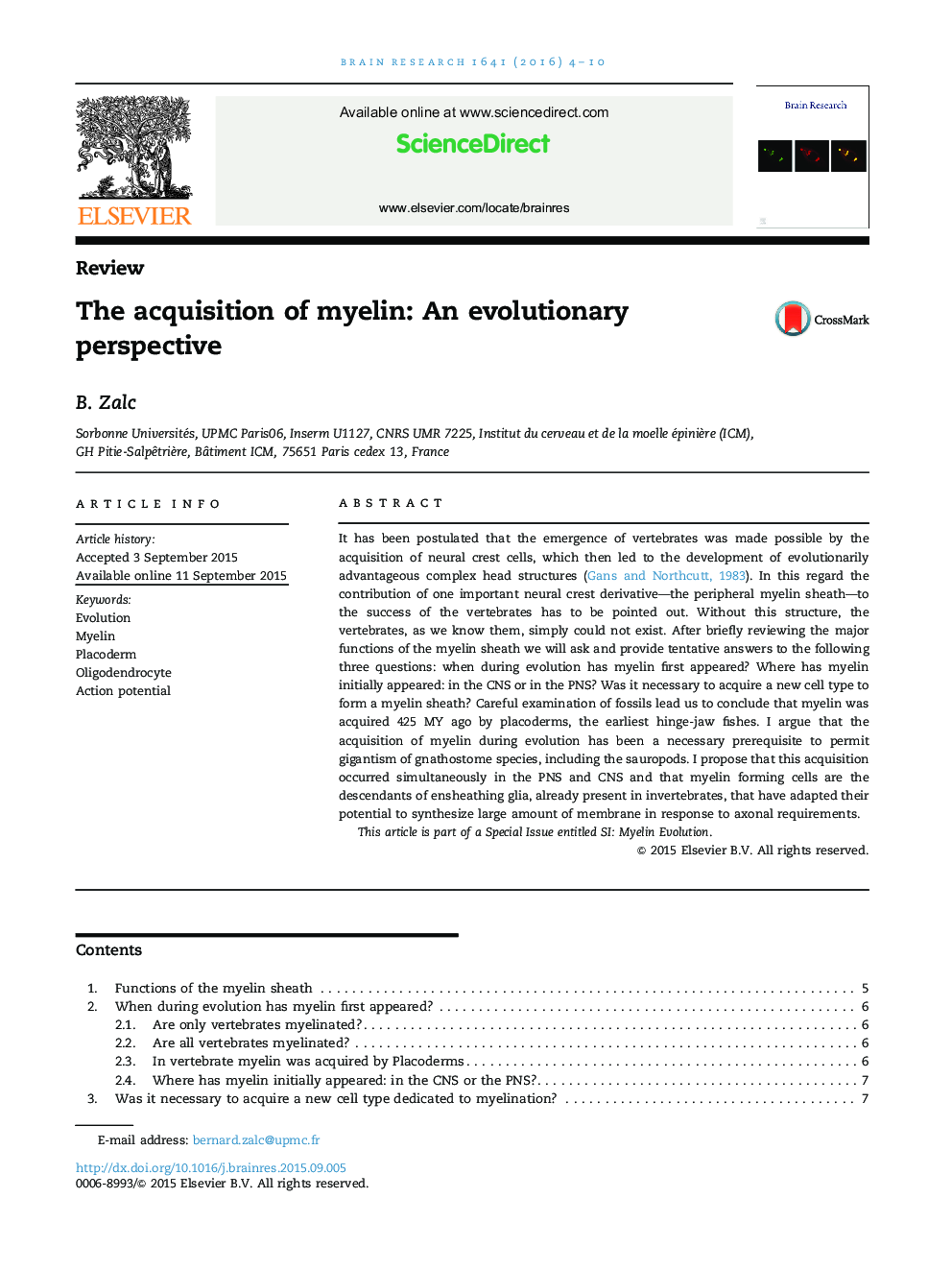| Article ID | Journal | Published Year | Pages | File Type |
|---|---|---|---|---|
| 6262501 | Brain Research | 2016 | 7 Pages |
â¢Acquisition of myelin: the key to vertebrate success.â¢Myelin was acquired 425MYR ago by placoderms the first hinged jaw vertebrates.â¢Myelin most likely evolved simultaneously in the PNS and CNS hand-by-hand.â¢Myelin forming cells originate from invertebrate glial ensheathing cells.â¢Neuronal signaling was crucial to induce the wrapping of glial cells around axons.
It has been postulated that the emergence of vertebrates was made possible by the acquisition of neural crest cells, which then led to the development of evolutionarily advantageous complex head structures (Gans and Northcutt, 1983). In this regard the contribution of one important neural crest derivative-the peripheral myelin sheath-to the success of the vertebrates has to be pointed out. Without this structure, the vertebrates, as we know them, simply could not exist. After briefly reviewing the major functions of the myelin sheath we will ask and provide tentative answers to the following three questions: when during evolution has myelin first appeared? Where has myelin initially appeared: in the CNS or in the PNS? Was it necessary to acquire a new cell type to form a myelin sheath? Careful examination of fossils lead us to conclude that myelin was acquired 425 MY ago by placoderms, the earliest hinge-jaw fishes. I argue that the acquisition of myelin during evolution has been a necessary prerequisite to permit gigantism of gnathostome species, including the sauropods. I propose that this acquisition occurred simultaneously in the PNS and CNS and that myelin forming cells are the descendants of ensheathing glia, already present in invertebrates, that have adapted their potential to synthesize large amount of membrane in response to axonal requirements.This article is part of a Special Issue entitled SI: Myelin Evolution.
